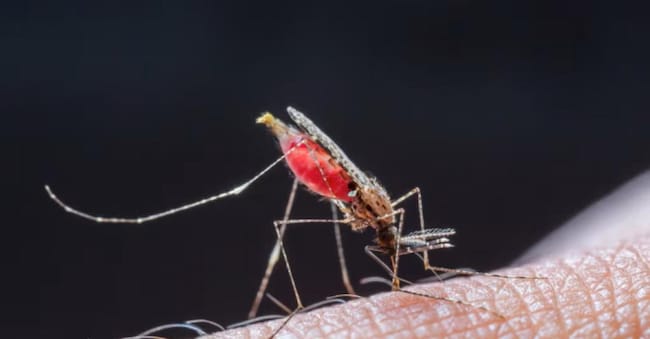Dengue and Chikungunya: the risk map in Italy and advice from experts


In recent years, localized episodes of indigenous transmission of dengue and chikungunya have been recorded in Italy, especially in the Northern and Central regions. However, there is a risk of further outbreaks in coastal areas and urban suburbs throughout the peninsula, which offer the most favorable conditions for the development of outbreaks of the so-called "tiger mosquito" (scientific name Aedes albopictus). A study coordinated by the Bruno Kessler Foundation and the National Institute of Health, in collaboration with the Ministry of Health and the Regions/Autonomous Provinces, recently published in the journal Nature Communications, maps the risk in Italy.
"The risk is widespread," the authors emphasize, "and it is desirable to increase clinical knowledge of these infections, maintain high levels of surveillance, and raise awareness among those returning from places where these infections are present or endemic."
Autochthonous cases of dengue and chikungunya, previously only imported diseases, have been increasing in recent years throughout southern Europe, driven by the resumption of international travel, the spread of insect vectors, and the increase in epidemics in tropical and subtropical climates. Researchers analyzed local transmission episodes between 2006 and 2023, applying mathematical models to analyze Italian outbreaks and estimate the risk of transmission in Italy, taking into account both human population density and entomological and climate data. Overall, 1,435 imported cases of dengue and 142 of chikungunya were confirmed during the period studied. Dengue infections were contracted primarily in Thailand, Cuba, India, and the Maldives, and chikungunya infections in India, the Dominican Republic, Brazil, and Thailand. Over the same period, 388 indigenous cases of dengue and 93 of chikungunya were diagnosed.
"All areas where local and focal transmission of the two viruses occurred in Italy were among those identified as high-risk in our analysis," the authors write. "However, many other areas with similar ecological conditions were also found and could therefore be equally at risk if cases were imported from abroad. This implies that prevention and surveillance measures must be directed toward areas with favorable environmental conditions, whether they have already experienced outbreaks or have not yet identified locally acquired cases."
According to the study, once indigenous outbreaks were identified, the transmissibility index was brought below the epidemic threshold within a short timeframe, about two weeks, confirming the quality of reactive control interventions. However, a certain delay in identifying cases remains: "In non-endemic regions, such as Italy, it is important to raise awareness of emerging vector-borne diseases because a delayed or missed diagnosis slows the detection of outbreaks and thus the ability to control them."
From January 1 to June 30, 2025, the ISS national surveillance system has recorded 68 confirmed cases of human dengue virus infection in Italy, all associated with travel abroad (median age 41, 51% male, no deaths). Most infections were contracted in Central and South America and Southeast Asia. There are 22 confirmed cases of human chikungunya virus infection in Italy, an increase compared to previous years, and all associated with travel abroad (median age 49, 50% male, no deaths). Most cases were contracted in Madagascar, Reunion Island, and Sri Lanka. Four confirmed cases of Zika virus have also been reported, all imported. Among endemic arboviral diseases, as of June 30, 2025, 12 cases of TBE (all autochthonous, no deaths) and 5 cases of Toscana virus infection (no deaths) have been reported. Although one confirmed sporadic case of West Nile virus has been reported during months of low transmission, the first reports of viral circulation in mosquito pools have begun, prompting the activation of transfusion control measures in the provinces of Oristano and Venice.
Gianni Rezza, former director of Prevention at the Ministry of Health and now associate professor of Hygiene at the Vita-Salute San Raffaele University in Milan, confirms the study's findings: "Wetlands, where vegetation and water residues are more common around homes, are at greater risk, but the likelihood of outbreaks during the summer is also directly proportional to the number of people arriving from tropical areas where the virus is actively circulating." Therefore, in the expert's eyes, the possibility of epidemics in many areas of the country is evident. "Naturally," Rezza points out, "the earlier a virus is introduced during the warm season, the greater the likelihood of a high number of cases. But fortunately, as the authors of the study point out, pest control interventions and the arrival of the cold season have so far limited the size of the epidemics. Climate change, if it were to cause a lengthening of the warm season, could favor the endemic nature of these viruses, something that has not occurred so far."
What can you do to prevent the risk of infection? Here's advice from ISS experts to protect yourself from mosquito bites and prevent them from easily reproducing:
- use repellent and wear long trousers and long-sleeved shirts when outdoors, especially at dawn and dusk;
- use mosquito nets on windows and stay in air-conditioned rooms;
- frequently empty containers with stagnant water (for example, buckets, flower pots and saucers, basins, bins, etc.) and cover any immovable containers;
- treat manholes and drainage grates in private gardens and condominium spaces with larvicides starting in April-May, throughout the mosquito-friendly season, at the intervals indicated on the product label;
- change the water in the pet bowls frequently;
- empty children's pools when not in use;
- Avoid peak activity hours: Many mosquitoes are most active at dawn and dusk, so it's advisable to avoid being outdoors during these hours or take extra precautions.
News and insights on political, economic, and financial events.
Sign upilsole24ore




-U64401155610brZ-1440x752%40IlSole24Ore-Web.jpeg%3Fr%3D1170x507&w=3840&q=100)
